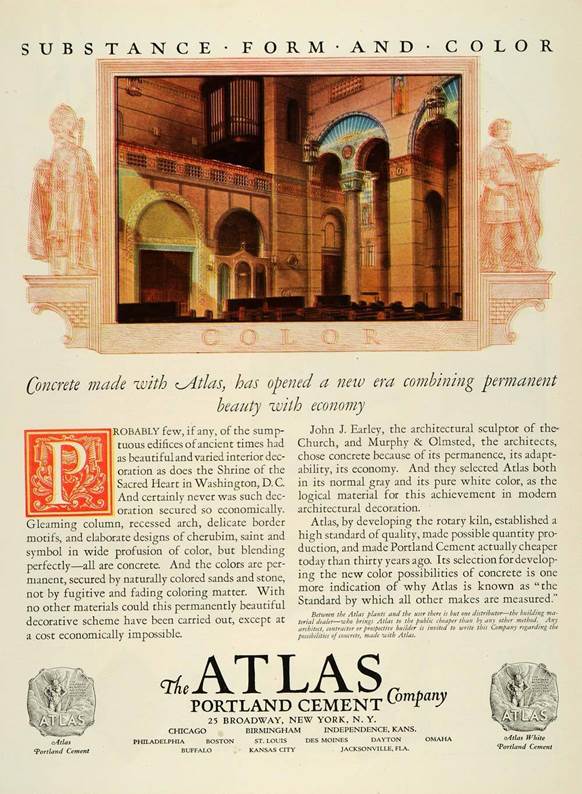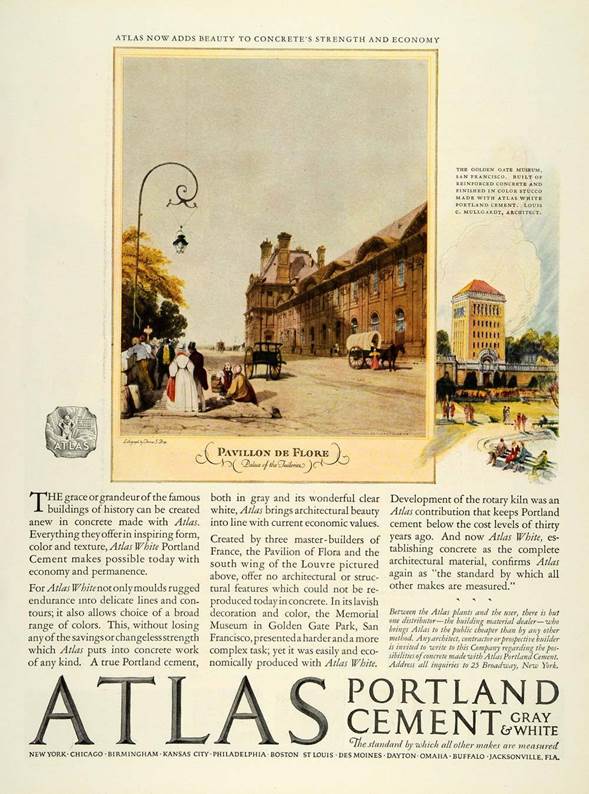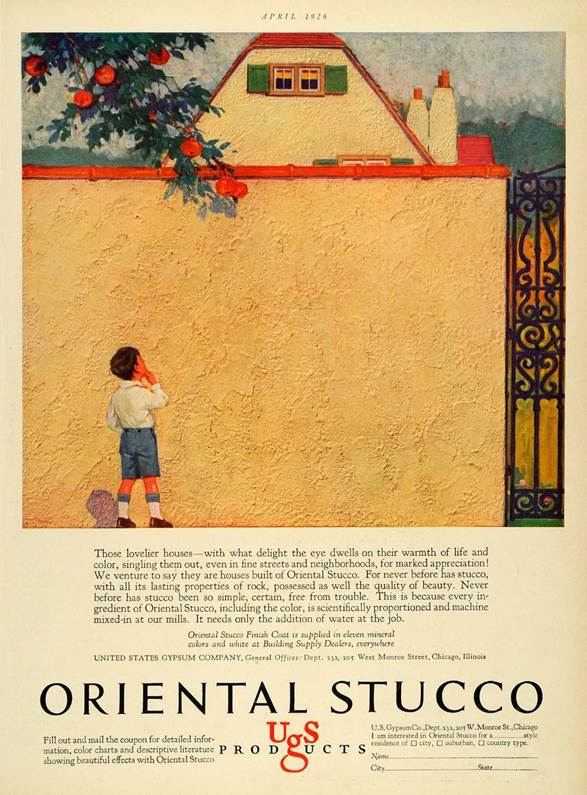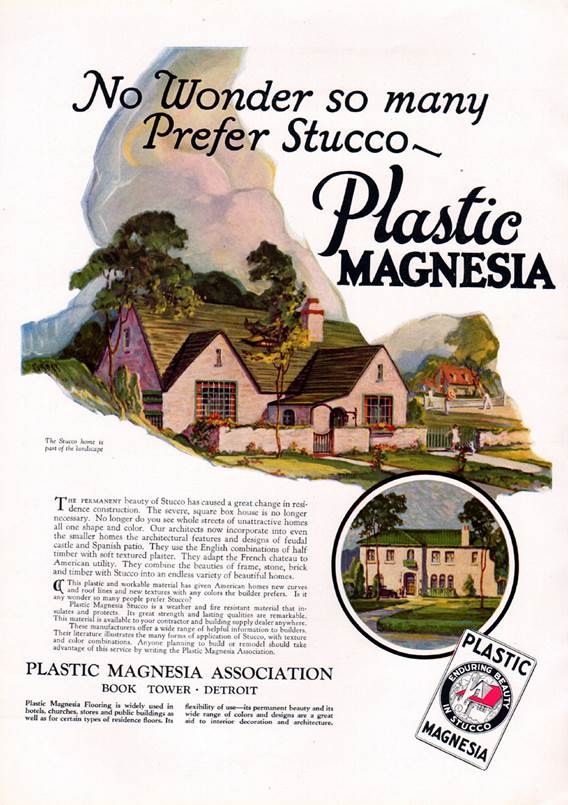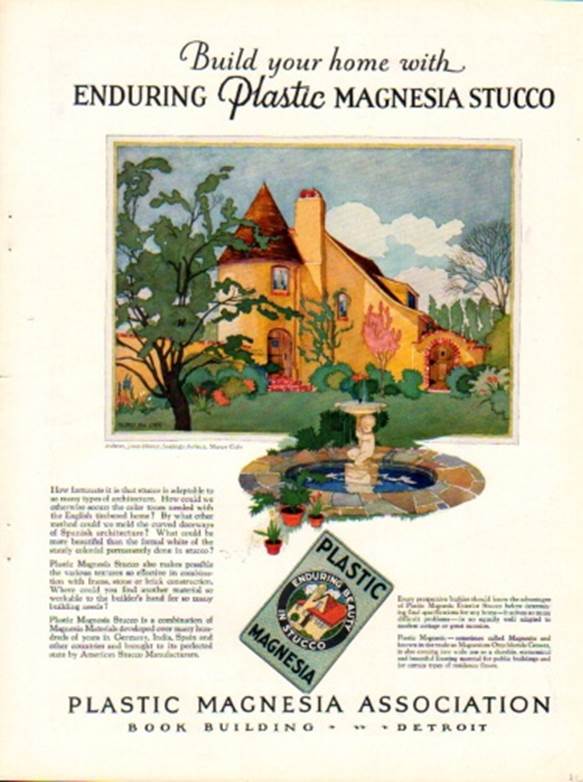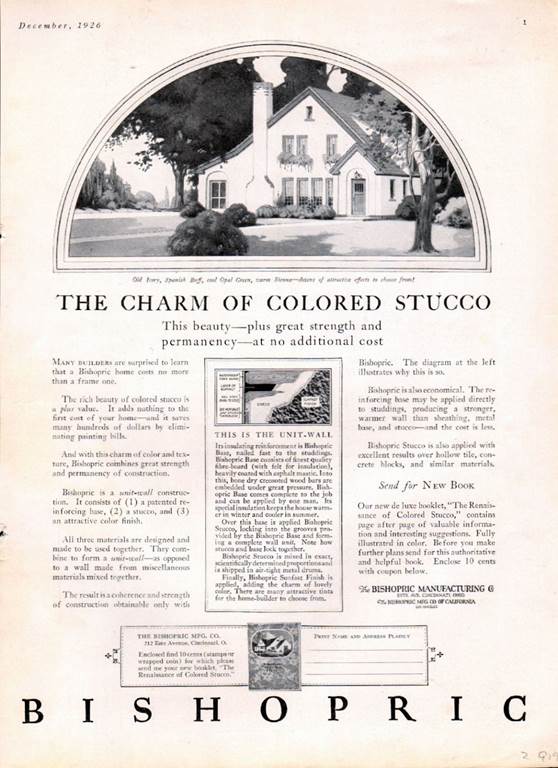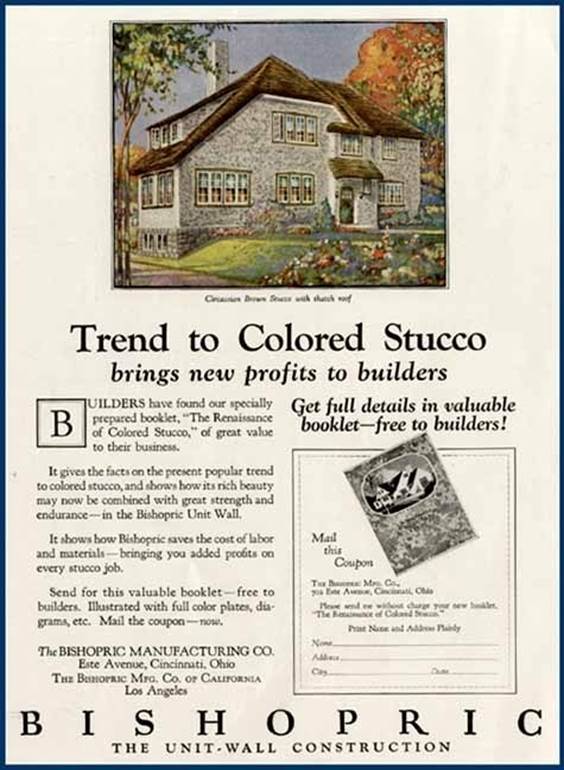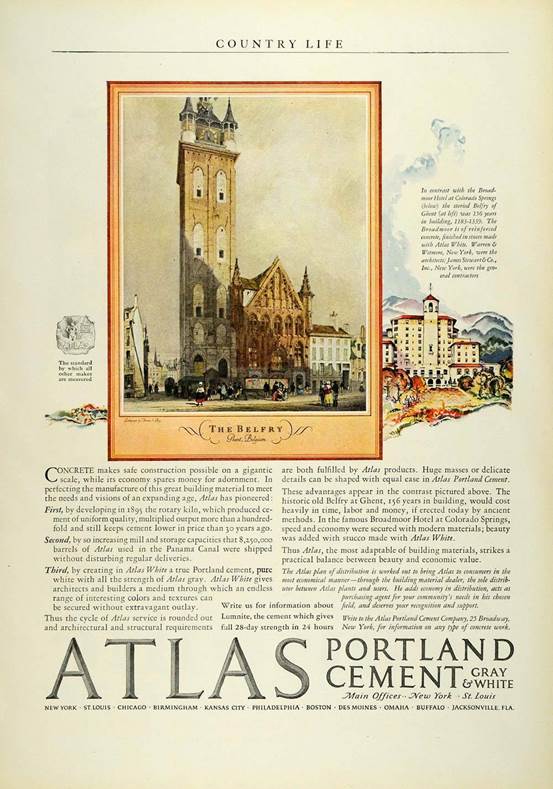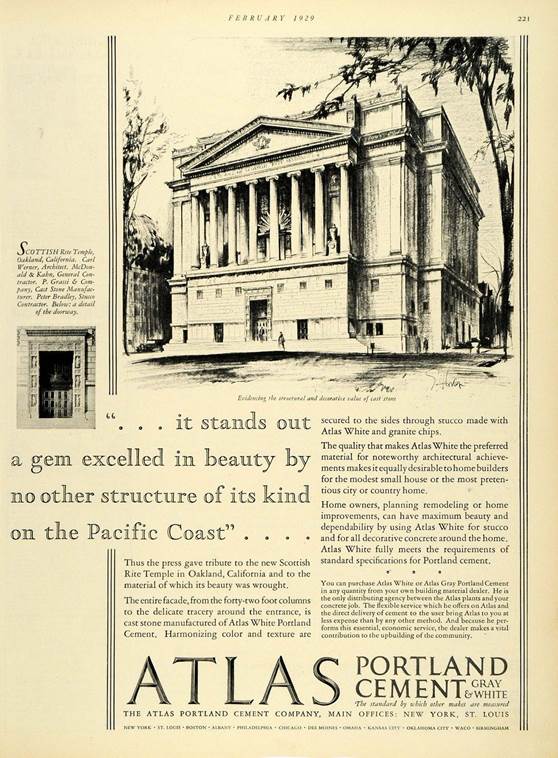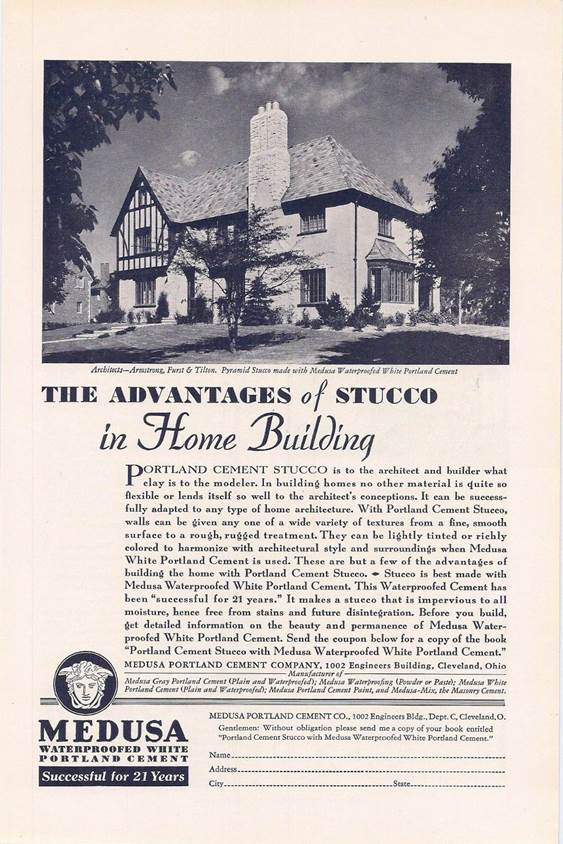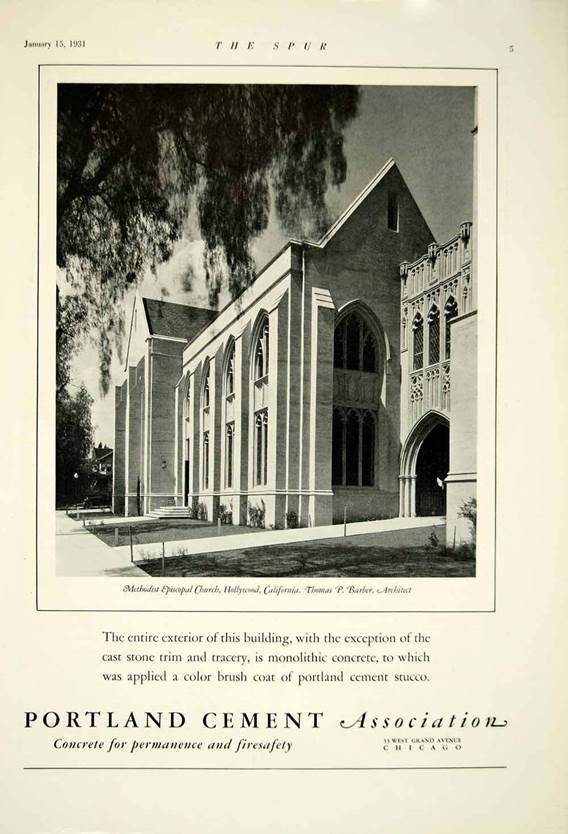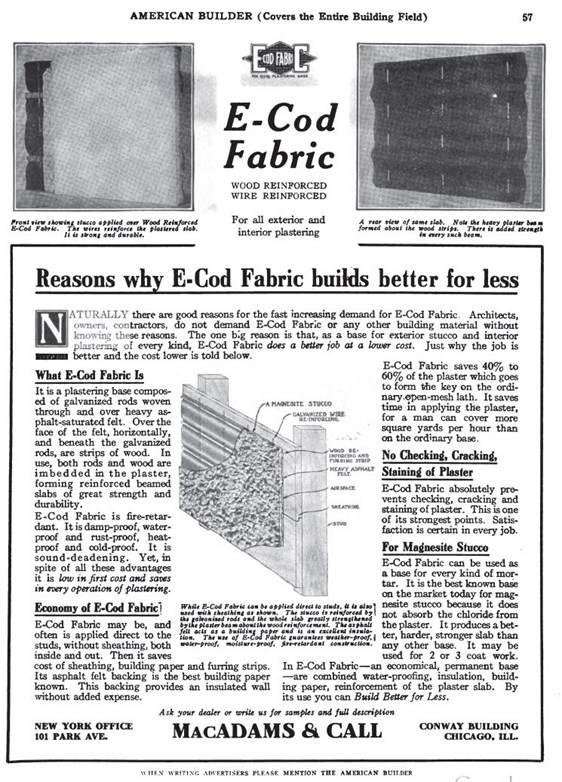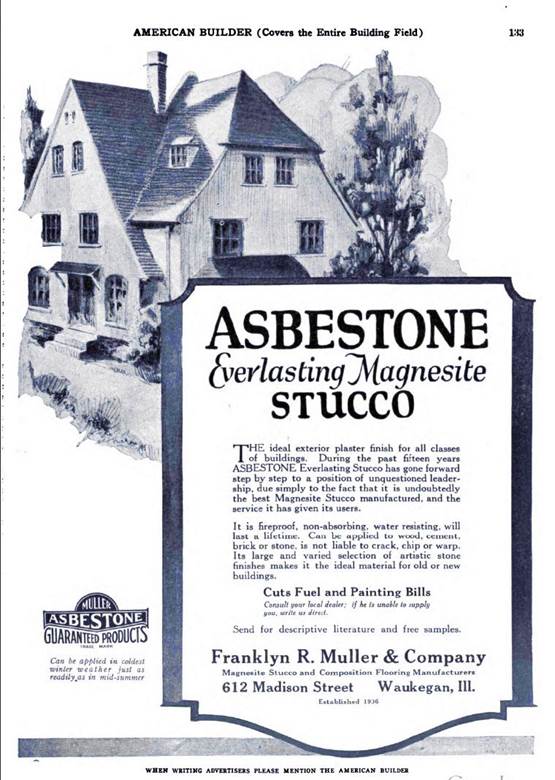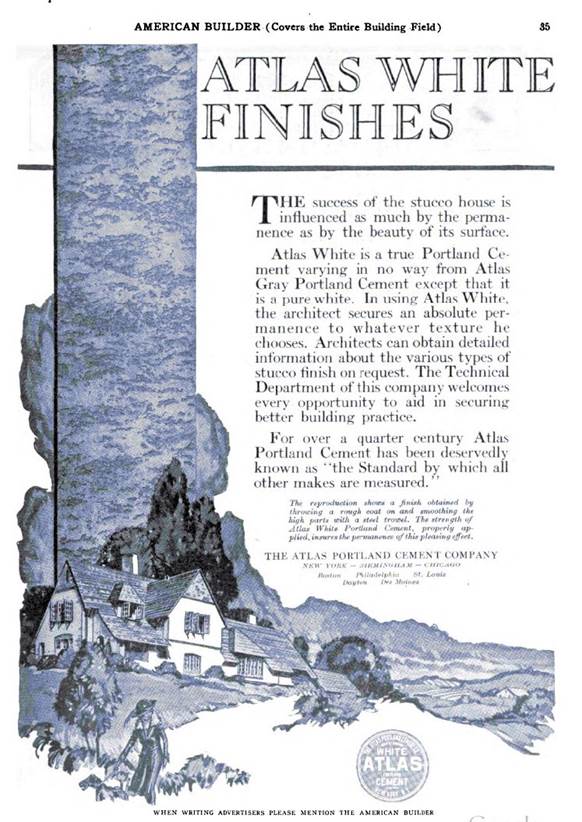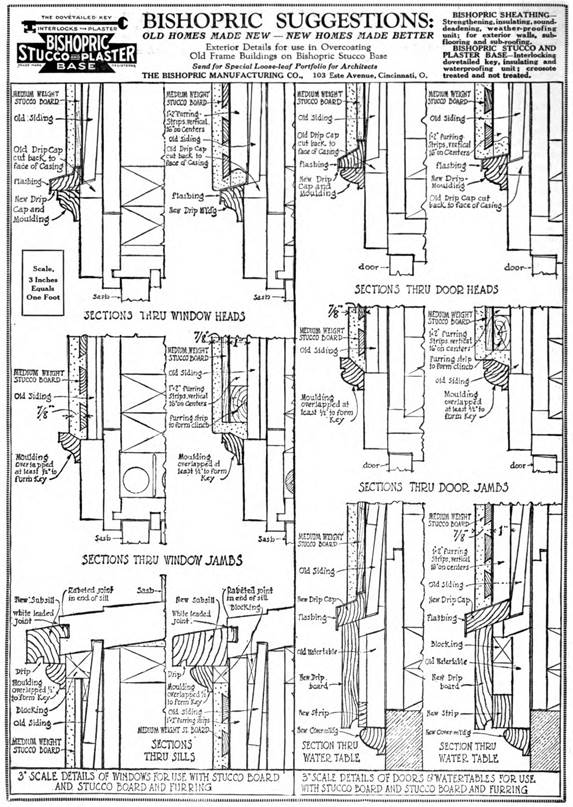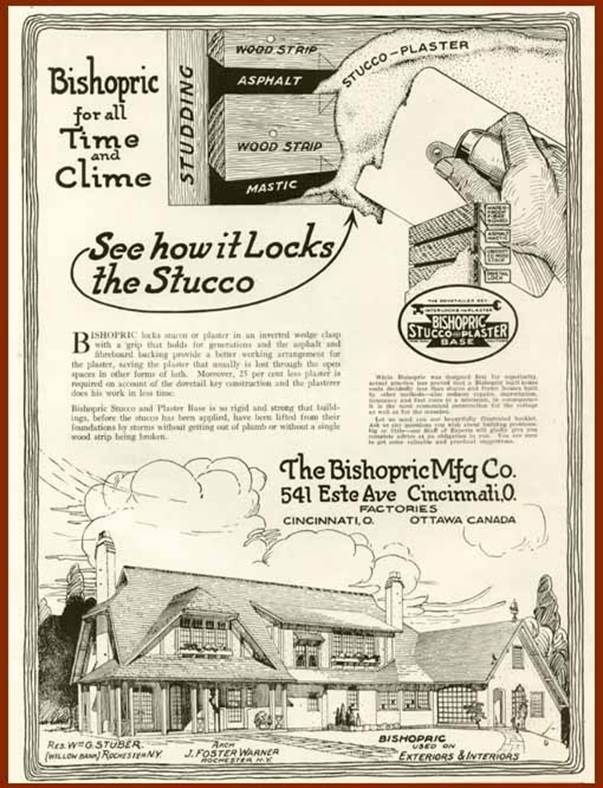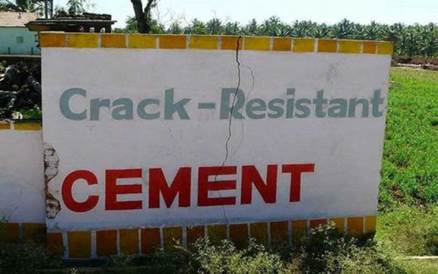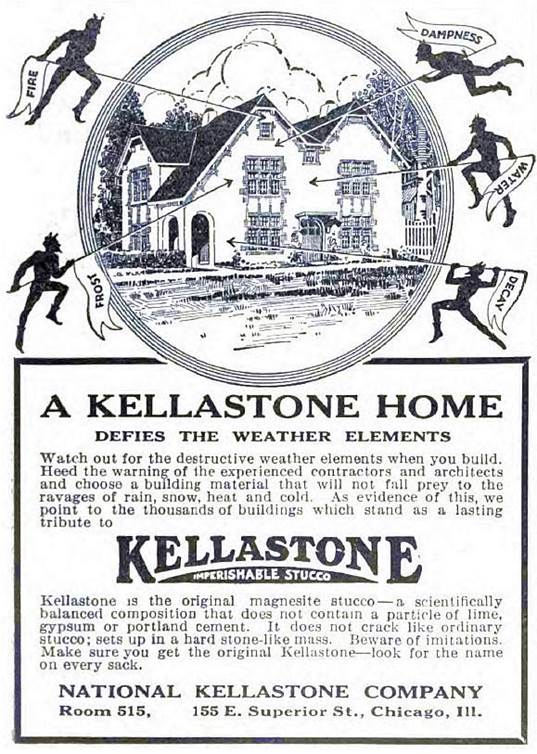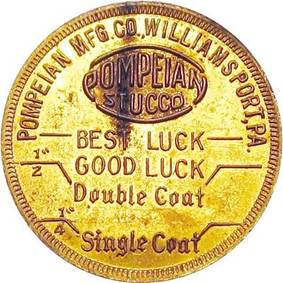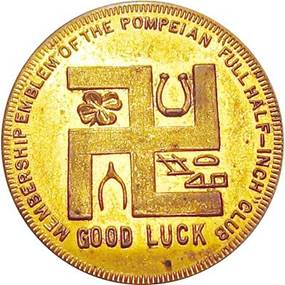|
StuccoMetricsฎ |
Jeff Bowlsby CCS, CCCA
Exterior Wall and Stucco Consultant
Licensed
California Architect
Stucco Vintage Advertisements
|
Executive Summary Advertisements
for stucco products from days gone by are one resource for knowing more about
what stucco, stucco products and stucco aesthetics used to be like in the
past. Visit the StuccoMetrics Reference Archives
webpage for cited references and further information. |
|
Context
1894 Portland cements, lime,
plastering hair
1912 Johns Manville Asbestos
Stucco
1915 The Hydrex
Felt and Engineering Co. Novento Waterproof Sheathing Paper
1915 The Standard
Paint Company Impervite
1916 Atlas White
Atlas Portland Cement Co.
1917 Atlas White
Atlas Portland Cement Co.
1917 Atlas White
Atlas Portland Cement Co.
1917 Atlas White
Atlas Portland Cement Co.
1917 Atlas White
Atlas Portland Cement Co.
1918 Atlas White
Atlas Portland Cement Co.
1919 Atlas White
Atlas Portland Cement Co.
1921 American
Magnesia Products Co. - Kragstone
1921 Atlas Portland
Cement Co.
1922 Milwaukee
Corrugating Co. - Milcor
1922 National
Steel Fabric Company
1922 Atlas White
Atlas Portland Cement Co.
1922 Atlas White
Atlas Portland Cement Co.
1925 The General Fireproofing
Building Products Herringbone
Rigid Metal Lath
1925 Portland
Cement Association Textures
1925 Atlas White
Atlas Portland Cement Co.
1925 Atlas White
Atlas Portland Cement Co.
1926 Atlas White
Atlas Portland Cement Co.
1926 US Gypsum
Co. Oriental Stucco
1926 Plastic
Magnesia Association Plastic Magnesia Stucco
1926 Plastic
Magnesia Association Plastic Magnesia Stucco
1926 Bisopric Manufacturing Co. The Charm of Colored Stucco
1927 The
Bishopric Manufacturing Co. Colored
Stucco
1927 Atlas White
Atlas Portland Cement Co.
1929 Atlas White
Atlas Portland Cement Co.
1931 Medusa
Waterproofed White Portland Cement
1925 Portland
Cement Association
E-Cod Fabric
Franklyn R. Muller
& Company Asbestone
The Atlas Portland
Cement Company White Finishes
The Bishopric
Manufacturing Co. Stucco Overcoating Details
The Bishopric
Manufacturing Co. Stucco and Plaster Base
Crack-Resistant
Cement
National Kellastone Company Imperishable Stucco
Pompeian Manufacturing Co.
Thickness gauge. Member of the Pompeian Full
Half-Inch Club Dont
be offended by the swastika it meant good luck in the era |
|
Observations These
and other period stucco and stucco product advertisements describe some of
the technical and creative aspects of stucco from the past. These ads were aimed at the buying public, at
the stucco design community and at stucco craftsmen. The
hype in some of these advertisements set a level of expectation, but thats
the way it was back then. Some of the
claims made and content in these ads could not occur today. |
|
Discussion Vintage
stucco ads can be works of art and beautiful in their own presentation, it is
refreshing just to experience them with a sense of nostalgia. Stucco is now and has been for a very long
time, a preferred exterior wall cladding for its many positive characteristics,
both aesthetically and functionally.
Perhaps if more contemporary ads were of this genre in the consumer
press, stucco would be in even greater demand. We
dont often see advertisements for stucco or stucco products in the consumer
press these days. What we do see is
primarily in trade magazines, for specific stucco products being promoted to
the craftsman, and occasionally to the designer or specifier. Stucco in the present day, has a persona
recognized by tight, flat, uniform, sand float or spray-on knock down
textures, and mostly in light pastel and earth tones. Stucco is capable of so much more,
experientially. Todays stucco palette
and paradigm could be broadened to be much more interesting. From
the ads we can glean clues about what was important to people back then,
where stucco was an admirable architectural solution. Stucco was used to overcoat existing
wood-sided buildings which required less maintenance, provided a degree of
fire-resistance, energy efficiency and enhanced aesthetics. Some of the ads were clearly aimed at the
technical side of how to use the materials, in the form of architectural
detailing. Some illustrate the
short-lived romance with asbestos and magnesium oxide stucco. Others promoted stucco aesthetics that are
uncommon but still revered today. |
|
Conclusions Some
technical and aesthetic nuances of stucco have changed over time, but in its
most basic form, stucco in the most important ways has not really changed all
that much. |
|
Suggestions We
can learn from stuccos past to determine stuccos future going forward. |
|
Consultation
with licensed and experienced stucco professionals is recommended for
stucco-related endeavors. No liability
is accepted for any reason or circumstance, specifically including personal
or professional negligence, consequential damages or third party claims,
based on any legal theory, from the use, misuse or reliance upon information
presented or in any way connected with StuccoMetrics.com. |
Home Page Contact Me Disclaimer




















